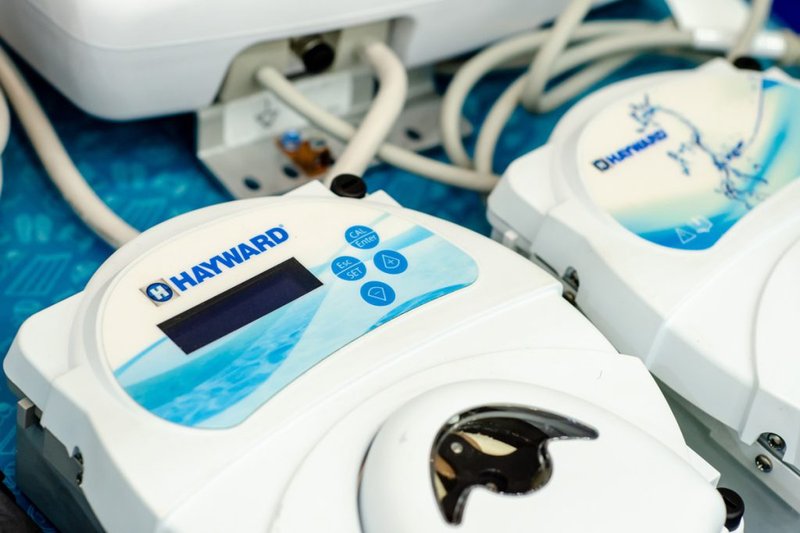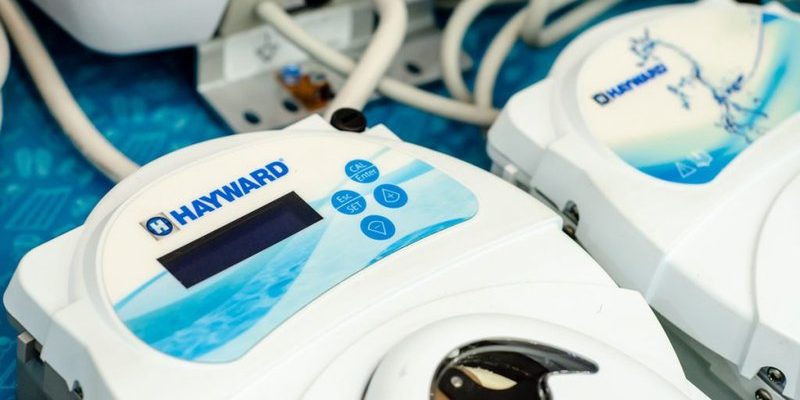
Hayward is one of those names you see everywhere when shopping for pool equipment—sort of like the “Apple” of the backyard pool world. Their remote controls promise to make managing your pool’s features much easier, but here’s the big question folks always ask: can a Hayward pool remote actually control the lights, heater, and pump all at once? Or are you stuck fiddling with separate buttons, menus, or—worse—running out to the equipment pad in your pajamas?
Let’s break down exactly what Hayward’s remote systems can do, how they work, and what it really feels like to use one. I’ll walk you through the basics, the bells and whistles, and even help you troubleshoot the hiccups, so you’re not left standing poolside scratching your head.
What Exactly Does a Hayward Pool Remote Do?
Here’s the thing: a **Hayward pool remote** is like a universal remote control for your pool setup. Instead of walking over to each piece of equipment—pump, heater, lights—and fiddling with their individual switches or dials, the remote lets you manage them from one spot. Some models are handheld devices, while others come as wall-mounted panels or even smartphone apps.
For the uninitiated, think of it as having the power to “sync” all your main pool features with one system. You can **turn on the pump**, adjust the heater temperature, and set the pool lights to whatever glowing color suits your evening mood, all without leaving your lounge chair.
Of course, to pull off this magic trick, the remote needs to “pair” with a main control panel—sort of like how your TV remote needs to be set up for your particular television. This is usually done during installation but can also be reset or re-synced if you swap out remotes or add new gadgets. And because technology isn’t perfect, learning how to “troubleshoot” basic issues (like dead batteries or a loss of signal) is key to smooth operation.
Can a Hayward Remote Really Control Multiple Features Together?
You might be wondering: does “controlling together” mean you hit one button and everything jumps to life? Or is it more like having separate buttons on the same remote? Honestly, it can be both, depending on which Hayward system you’re using.
Most Hayward remotes with automation (like the *OmniLogic*, *ProLogic*, or *AquaPlus* systems) let you control each individual component—lights, pump, heater—from the remote’s menu. But here’s where it gets cool: these remotes can also be programmed with “scenes” or “group functions.” Press the “Night Swim” button, for example, and the pool lights shift to blue, the heater kicks on to 85°F, and the pump turns to low speed, all at once.
- Individual control: Adjust each feature separately—dim the lights, tweak the heater, or cycle the pump at different speeds.
- Combined or scene-based control: Program and launch multiple features in one go for specific moods or times of day.
What’s important to know is that not every Hayward remote offers all these options. If you want the most flexibility, look for remotes that specifically advertise “automation” or “scene control”—otherwise, you may find yourself toggling features one by one.
How Does a Hayward Pool Remote Work Behind the Scenes?
Let me explain what’s going on inside that little remote and your pool pad. Hayward’s remotes talk to a central control unit—the “brains” of your pool—typically mounted near your pool equipment (the pump, heater, etc). The remote sends wireless signals (sometimes via radio frequency, sometimes via Wi-Fi or Bluetooth) to this hub, which then relays instructions to each piece of gear.
If you’ve ever synced a smart speaker to your phone, this setup will feel familiar. There’s a pairing process where the remote and control panel “learn” to communicate. Sometimes it’s as easy as pressing a button; sometimes you’ll be entering codes or pushing reset pins on both devices.
The main controller is wired to all the equipment: pumps, heaters, lights, and even extras like chlorinators. When you issue a command—like “turn on the heater”—the remote’s signal is picked up by the controller, which then powers on the heater and reports back to your remote that it’s been done.
If you ever lose connection, or if something doesn’t work, you’ll want to check if the battery in your remote is low, if the devices are still paired, or if the remote is out of range. Sometimes a quick code re-sync can solve mysterious glitches.
Setting Up Your Hayward Remote: Pairing, Codes, and Batteries
Getting your **Hayward pool remote** up and running isn’t rocket science, but it does involve a couple of steps. Think of it like pairing headphones with your phone—it’s easy once you know the routine, but confusing if you haven’t seen it before.
First, you’ve got to **install fresh batteries** in the remote (or charge it, depending on the model). If your remote isn’t turning on or responding, this is the first thing to check—dead batteries are the number one culprit in troubleshooting.
Next, sync or pair the remote with your main control panel. Most Hayward systems have a “learn” button, or a simple code sequence you enter on both the remote and the panel. Sometimes, especially with older models, you’ll need to consult the manual for the pairing code.
If you’re upgrading or adding a new remote, you may need to “reset” the pairing on your control panel to accept the new device. And don’t be surprised if you have to do this every time you swap batteries or experience a power outage—technology can be quirky like that.
Pairing tip: Always keep your remote and main panel close together during setup, and listen for beeps or watch for lights that confirm a successful connection.
Managing Pool Lights, Heater, and Pump: Real-World Examples
Let’s say you’re planning a late-night swim. With a **Hayward pool remote**, you scroll to the “Lights” section, pick your favorite color, then switch over to “Heater” and set the water temperature. Finally, you tap the “Pump” setting to start circulation. Each equipment piece fires up exactly how you want it—no running back and forth.
Or maybe you’re hosting a party. You might use a pre-set scene: “Party Mode.” One press and boom—the lights go neon blue, the heater nudges the water to a perfect 86°F, and the pump runs quietly so nobody has to shout over the hum. If you need to tweak anything (like dimming the lights when the kids go to bed), just tap the specific feature you want to adjust.
The real convenience is that all these controls are in one spot—on the remote, your smartphone, or a wall panel inside the house. You don’t have to memorize which switch does what, or deal with old-school timers that never seem to work quite right.
Common Issues: Troubleshooting Hayward Pool Remote Problems
Now, even the best tech can act up now and then, and Hayward pool remotes are no exception. Most problems are pretty easy to fix, but they can leave you scratching your head if you don’t know where to start.
- Remote not responding? Check the batteries—it sounds silly, but it’s the answer more often than not.
- Can’t control all devices? Double-check that the remote is properly paired with the control panel. Sometimes you’ll need to re-sync after a power outage.
- Lights, heater, or pump won’t turn on remotely? Make sure those features are actually wired to the automation panel, and that no safety locks are in place.
- Signal interference? If you’re too far from the equipment, or there’s thick concrete in between, try moving closer. Upgrading to a Wi-Fi or app-based model can help overcome distance issues.
If you’re still having trouble, resetting both the remote and the control panel can often get things back on track. And if you’re ever really stuck, Hayward’s customer support is actually pretty helpful—they’ve heard it all before.
Comparing Hayward Remotes With Universal Pool Remotes
You might be tempted to grab a **universal remote**—those off-brand gadgets that promise to manage any pool equipment. While some of these can work for basic tasks, they usually don’t offer the full “all-in-one” experience Hayward’s own remotes do, especially when it comes to advanced features like code syncing, group scenes, or complex automation.
With a genuine **Hayward pool remote**, you get seamless integration, reliable updates, and the peace of mind that everything is designed to work together. Universal remotes often miss out on specific settings (like unique color options for lights or heater safety overrides) and can sometimes struggle to pair correctly.
If you want true push-button control over your pool’s lights, heater, and pump together, stick with the Hayward lineup. The convenience and support are well worth it.
Why Pool Automation Matters (And How It Changes Your Experience)
Back in the day, keeping a pool running was a full-time job: flipping switches, battling timers, running outside mid-dinner to check on the pump. Now? Automation puts the power in your hand—literally. With a good **Hayward pool remote**, you’re in total control, and your pool feels less like a chore and more like an escape.
Automation also adds a layer of safety and efficiency. You can set up custom schedules so your pump isn’t running all night (saving energy), or make sure the heater only kicks in when you need it. The ability to quickly “reset” or “troubleshoot” from your couch means you don’t lose valuable swim time to technical gremlins.
And honestly, there’s just something satisfying about pressing one button and seeing your backyard transform—like you’re the director of your own mini resort. Once you’ve tried automation, it’s tough to imagine going back to the old way.
Wrapping Up: The True Power of Hayward Pool Remotes
So, can a Hayward pool remote control your lights, heater, and pump together? Absolutely—if you pick the right system and take a few minutes to set it up properly. These remotes are more than just fancy toys; they’re the backbone of a hassle-free pool experience. Whether you’re craving a peaceful solo swim or prepping for a rowdy pool party, all it takes is a push of a button to create the vibe you want.
From scene-based controls to simple on-off functions, Hayward’s automation brings everything together—even making troubleshooting and maintenance easier. If you’re tired of running back and forth to the pool pad, or fumbling with a dozen different switches, upgrading to a Hayward remote is honestly a game-changer. Dive in, sync up, and make your backyard a place you can truly enjoy, one click at a time.
